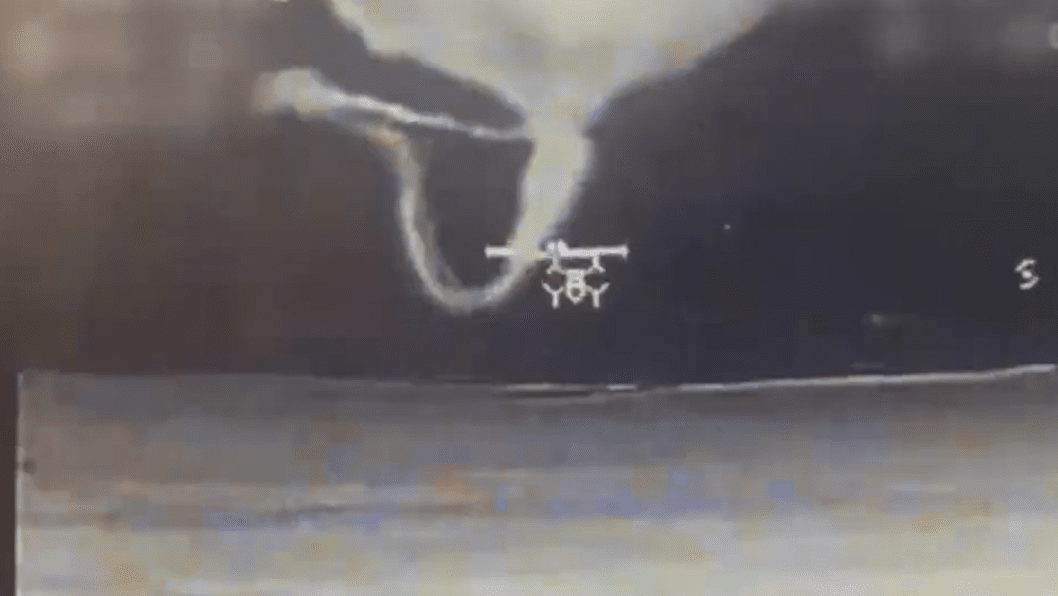- Category
- Latest news
Secret Note in Downed Shahed Drone Reveals Russia’s New Telegram-Control Tactics

A Russian engineer appears to have secretly tipped off Ukraine about a breakthrough in Russian drone warfare—one that could upend air defense strategy.
A handwritten note discovered inside a downed Shahed drone, likely left by a pro-Ukrainian insider, describes a new control system used by Russian forces: drones are now piloted via bots on the Telegram messaging app, transmitting flight paths and live video feeds to operators in real-time, The Economist reported on May 25.
The discovery was made by a team of Ukrainian engineers working in a covert lab in Kyiv, where every drone that crashes on Ukrainian soil undergoes a meticulous forensic teardown. The note confirms what experts had already begun to suspect—that Russian drones are now bypassing electronic jamming, relying not on vulnerable GPS signals but on artificial intelligence and Ukraine’s own cellular networks.
“The newest Shahed drones are unfazed by our EW systems,” one engineer explained. “They use onboard AI, connect to Ukrainian mobile networks, and are steered through Telegram bots.”
This revelation highlights a growing technological sophistication in Russia’s drone war—and Ukraine’s increasingly desperate race to adapt.
-5419bf19b6189702ce15b2c1f02484ed.jpg)
On May 25, Russia launched what may have been its largest aerial assault yet, targeting Ukraine with 298 drones and 69 missiles in a single night—a record-setting strike. As one Ukrainian official put it, “We’re entering a new phase of this war.”
According to The Economist, Ukraine’s air defense systems are being overwhelmed. The Kremlin, once limited to about 300 Shahed drones per month, now produces that number in less than three days, according to Ukrainian intelligence.
Documents suggest Russia aims to ramp up to 500 drones per day, potentially enabling swarms of 1,000 in a single attack. While experts like aviation analyst Kostiantyn Kryvolap remain skeptical of such figures, they agree the threat is rapidly escalating. “It’s clear the numbers are going to increase significantly,” he said.
The Shahed drones themselves are now in their sixth iteration since Iran began supplying them in 2023. They’re deadlier, smarter, and harder to stop.

Colonel Denys Smazhny of Ukraine’s Air Defense Forces said Russian drones now routinely outmaneuver mobile defense crews. They fly low to avoid radar, then climb above the effective range of short-range weapons just before reaching urban areas. In response, Ukraine is relying more on helicopters, F-16s, and interceptor drones. Around Kyiv, air defenses are still shooting down roughly 95% of incoming drones—but the remaining 5% are doing serious damage.
Speaking about the interception of Russian ballistic missiles, The Economist stated that the American-made Patriot system remains the only effective countermeasure, and Ukraine only has around eight batteries, some of which are often out of action due to combat damage.
Since spring 2023, Ukraine’s Patriot crews have downed more than 150 ballistic missiles, a remarkable feat. But President Volodymyr Zelenskyy says that to truly protect the country’s cities, Ukraine needs at least ten more Patriot batteries—plus a reliable supply of PAC-3 interceptor missiles.
“The country is ready to pay whatever it takes,” Zelenskyy says, likely with European financial backing. But Washington’s response has been lukewarm.

Under a second Trump administration, Ukraine is now one of many customers competing for limited US defense production, The Economist added.
Lockheed Martin currently produces around 650 PAC-3 missiles per year—fewer than the number of ballistic missiles Russia is expected to manufacture in 2025. Each interception typically requires two.
Ukraine has requested a license to manufacture PAC-3 interceptors itself, but that appears unlikely. Joint production may begin in Germany by late 2026, but it will come too late to address today’s urgent shortfalls.
Kryvolap believes Ukraine may need to adopt a new strategy: combining defensive interception with offensive strikes on Russian missile launchers and drone factories. “We should be under no illusions,” he said. “We will have to destroy the launch complexes, the factories, and the stores.”
Earlier, unidentified drones struck a Shahed drone production facility in Yelabuga, Tatarstan, and a chemical plant in Russia’s Ivanovo region overnight.



-21d0b63c17f6020e4df75f6c6f9a2f4f.jpg)


